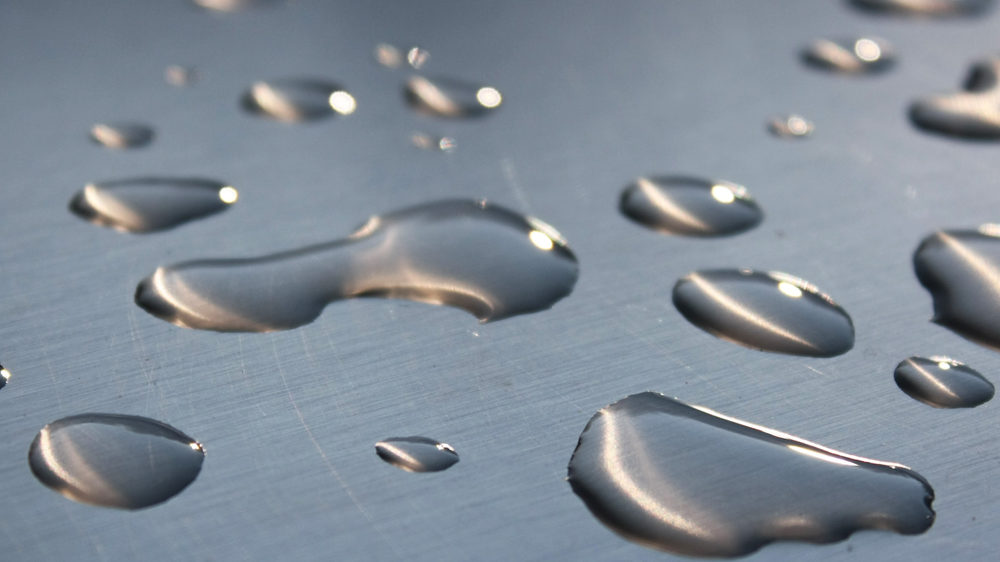This post may contain affiliate links, which means that we get commissions for purchases made through such links, at no additional cost to you. As an Amazon Associate we earn from qualifying purchases.
This article examines the possibility of printing waterproof labels with thermal printers. Thermal printing is becoming increasingly popular, so our team set out to find out the different things you can do with it. Waterproof printing is one such possibility.
Is thermal printing waterproof? The only waterproof thermal printing mechanism is the dye-sublimation technique. Aside from this, other thermal printing techniques are not waterproof. However, thermal transfer printers can print on waterproof materials, usually synthetic fiber which cannot be damaged by water. But to make the imprints waterproof, you must laminate the print or add fixative spray to its surface.
Water is one of the major elements that damage printed materials. But if you will read on, we can teach you how to make waterproof labels. With this knowledge, you can protect your thermal labels from water damage and increase their durability.

How to Make Waterproof Thermal Prints?
To get the best quality of waterproof thermal prints, you have two options. The first option is to use a dye-sublimation printer. But this type of printer can only print on synthetic fiber, such as PVCs. The second option is to use resin ribbon to print on polyethylene label rolls with a layer of top coating. You would need a thermal transfer printer for this since direct thermals don’t use ribbons.
In the next section, we will see the different ways to achieve waterproof prints.
Use A Dye-Sublimation Printer
Dye-sublimation mechanism vaporizes dye pigments which, in turn, penetrate the print media’s surface. The dyes diffuse into the media material, bonds with its molecules, and creates permanent imprints. Since the imprints are not on the print media’s surface, but embedded within its fabric, it’s waterproof. The image will not fade even after several washings.
Dye-sublimation pigments do not fade or smudge due to water exposure or high temperature. The ink pigment becomes ingrained in the substrate, so it would last as long as the material lasts. This printing techniques is is used specifically on synthetic media materials, such as PVC and polyester. You can also use it to print om pre-coated ceramics and metals, as well as polyester t-shirts.
Use Synthetic Media
There are different types of media but not all types are waterproof. Label rolls made of synthetic material typically have waterproof properties. The surfaces of these materials repel water, so water cannot penetrate or destroy them.
Examples of synthetic media include those made of polyester, polyimide, polypropylene, polyethylene, and vinyl materials. Thermal printable CDs used in thermal disc printers, as well as plastic tapes used in embossing label makers are good examples of synthetic media. These materials are durable and good for printing thermal labels that would be constantly exposed to water.
Use Resin Ribbons
The type of thermal ribbon you use for your printing also determines how much water resistance your thermal label would have. There are three types of ribbons: wax, wax/resin, and resin. Of these three, resin ribbons offer the best water resistance and are the most durable.
Resin ribbon melts into the label material and does not just stay on its surface. So it is smudge-resistant and can withstand moisture-exposure and contact with water.
Add Top coating
If you are using paper media but desire to protect the print from water damage, you should use paper rolls that have a top layer of coating. Manufacturers consider this layer of coating to be optional, so not all label rolls have it. This layer offers water-resistance and protection from UV damage.
Top coatings also offer additional water resistance when the base layer of the label roll is made of synthetic media instead of paper. This combination offers more strength and durability. Of all label roll materials, polyethylene seems to be the most durability.
How To Waterproof All Thermal Labels
Laminates and fixative sprays can help shield labels from moisture and UV will make your label both waterproof and UV-stable. If your thermal label is not originally waterproof, you can waterproof it by laminating the label or by using a fixative spray on it.
Let’s take a closer look at these two methods
Lamination
There are two types of laminations: Thermal lamination and cold lamination. Thermal lamination involves sandwiching the label between two layers of synthetic material. Since this method requires heat, it is not advisable to use it for thermal labels. Heat can degrade thermal labels.
The best lamination method for thermal labels is cold lamination. This method does not involve heat. Instead, it uses pressure to apply a layer of laminate film on the surface of labels. Lamination will slightly reduce the sharpness of your image but that is not too much sacrifice to make for water resistance.
✅ Video – How to Waterproof Labels; DIY Homemade Labels for cosmetics and more
After watching this video, you will be amazed at how easy it is to DIY laminate your thermal prints using the cold lamination method. Do you know that you can make your labels waterproof in the comfort of your home within 1 minute? Watch this video where TaraLee demonstrates how to do this.
Fixative Spray
This method is versatile and suits many printed media types. All you need to do is spray the fixative solution onto your thermal label directly. This would add a transparent protective layer to the label when the solution dries. Your thermal label would then become waterproof and UV-stable. Fixative sprays are available in satin, matte, and glossy finishes.
Why Do You Need Waterproof Thermal Prints?
You need waterproof prints for applications that would be used in wet or moisture-rich environments. Waterproof labels are good for outdoor applications because they are durable and strong. You can also use them for indoor applications where water resistance is necessary.
If your printed material will be exposed to liquids or moisture, you need to make them waterproof. But the waterproof property often does not stand alone, Waterproof labels are also equipped to handle extreme temperatures (high/low) and to be resistant to scratches and tear. You need waterproof prints for applications like product labels and shipping labels, and any form of outdoor application.
Some of the common uses of waterproof thermal prints are as follows:
Foods and Beverages Product Labels
Thermal labels that will be used for food and beverage products need to be fortified against wet hands, as well as refrigeration. As such, they need waterproof labels. When you use waterproof labels, customers can hold your product with sweaty hands without qualms.
Waterproof labels give your product a professional look that endures whether you hold them with your hands or place them in the cooler, fridge, or freezer. They are, therefore, good if you are printing product labels for food, beverages, or water bottles.
Labels for Bath and Body Products
Waterproof prints are the ideal choices for any product that you will use near the sink or in your bathroom. That’s why you need waterproof labels if you manufacture bath and body products. If your label is not waterproof, the print will bleed on your customers’ hands and probably stain any surface where they place the container.
Outdoor Labels
Outdoors environments are generally volatile, so you need tough labels for outdoor applications. Thermal prints for outdoor use must be able to hold up come rain, come shine. They must be able to resist damage from elements, such as rain, UV rays, direct sunshine, and dust, among others.
Shipping Labels
Although waterproof prints are not absolutely necessary for shipping labels, they are a better option. You can’t tell the conditions that your packages would go through while it is being transported to your customer. So it’s best to fortify the shipping label against any element that could degrade it, including water. Waterproof shipping labels have a higher chance of remaining intact until the products reach their destinations.
Related Questions
What printer do you need for waterproof labels?
You can use standard office or home printers for waterproof labels, and you can use thermal transfer printers too. However, make sure you get the appropriate type of label roll that matches the type of printer you are using.
Thermal label rolls are made for thermal printers because they accept thermal ribbons and can withstand heat from the thermal printhead. If you use an inappropriate label media for thermal printing, you will get a poor outcome. In the same vein, you shouldn’t use thermal label rolls on standard printers.
Are direct thermal labels waterproof?
Direct thermal printing uses specialized direct thermal papers and papers are generally prone to water damage. So, direct thermal labels are usually not waterproof. However, there are now thermal films compatible with direct thermal printing.
If you have to use a direct thermal printer and you desire to have a waterproof label, make use of direct thermal printable films. They are quite expensive but they are suitable for waterproof applications.
What is the difference between direct thermal and thermal transfer?
Direct thermal printing, as the name implies, uses direct heat from the thermal printhead to create label images. Thermal transfer, on the other hand, uses indirect heat. The heat from thermal transfer printheads melts special ribbons and transfers them to the label to create images.
Direct thermal printing only requires thermal papers with embedded heat-sensitive ink pigments. Heat activates these pigments to produce imprints. Conversely, thermal transfer printing requires label rolls and thermal transfer ribbons.
Conclusion
Waterproof thermal prints are thermal prints or labels that can resist water damage at least to a reasonable extent. Waterproof labels are also smudge-proof and more durable. Many waterproof labels, especially those made with synthetic media and resin ribbons are also UV-stable and can withstand extreme temperatures. While not all thermal labels are waterproof, you can print waterproof labels if you desire.
